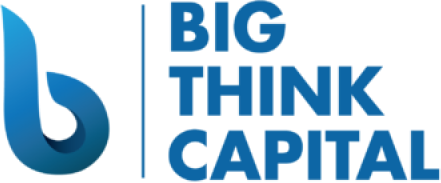Strategies to Survive Inflationary Downturns: How Small Businesses Can Leverage Government Loans, Financial Tools and Capital Advances
- Explore various funding options, including government loans and alternative financing.
- Regularly evaluate your business’s cash flow and expenses for timely adjustments.
- Develop a robust financial strategy to navigate inflationary challenges.
- Consider technology upgrades to improve operational efficiency.
- Build cash reserves to cover operational costs during tough times.
Understanding Inflation and Its Impact on Small Businesses
- Increased costs of raw materials and supplies.
- Higher wages to attract and retain staff.
- Elevated operational costs that eat into profit margins.
According to the U.S. Bureau of Labor Statistics, consumer prices increased by 7.9% in 2021, marking one of the highest inflation rates in recent history. As of early 2025, inflationary pressures continue to affect various sectors, emphasizing the need for small businesses to adapt quickly.
Leveraging Government Loans for Financial Stability
- SBA 7(a) Loan Program: This is the most common SBA loan and can be used for various purposes, including working capital, equipment purchases, and business expansions. Current interest rates are typically lower than traditional bank loans, making them an attractive option for cash-strapped businesses.
- SBA Express Loans: These loans offer reduced paperwork and faster processing times, which can be beneficial for businesses that need immediate funds. The maximum borrowing limit is $500,000, and businesses can receive funding in as little as 36 hours.
- Economic Injury Disaster Loans (EIDL): Initially introduced during the COVID-19 pandemic, EIDLs can provide financial relief to small businesses affected by economic downturns. These loans help businesses cover operational expenses like payroll, utilities, and rent.
Utilizing Alternative Financial Tools
- Working Capital Advances: These advances provide access to quick cash based on future credit card sales. They are particularly beneficial for businesses with fluctuating revenues as they allow for flexible repayment terms tied to sales performance.
- Merchant Cash Advances (MCA): Similar to working capital advances, MCAs provide upfront capital in exchange for a percentage of daily credit card sales. This option offers businesses the ability to access funds without traditional credit checks, making it a viable solution during tight cash flows.
- Lines of Credit: A business line of credit allows owners to withdraw funds as needed up to a pre-approved limit. This type of financing is advantageous for small businesses since it provides flexibility and helps manage short-term cash flow needs.
Creating a Financial Strategy for Inflationary Periods
- Budget with an Eye on Inflation: Regularly review your budget and adjust for inflation. Be proactive in registering price changes in supplies and services you rely on to create an accurate financial forecast.
- Negotiate with Suppliers: Build strong relationships with your suppliers and negotiate better rates. Consistent business can often translate into bulk discounts or favorable terms, helping to manage overall costs during inflationary periods.
- Increase Cash Reserves: Aim to build a cash reserve that can cover at least three to six months of operational expenses. This safety net can provide the necessary funds during tough times, enabling business continuity without resorting to high-interest loans.
- Monitor Economic Indicators: Staying informed about economic trends and potential inflation indicators can help small business owners make timely decisions. Watch for market shifts that may affect your industry and prepare to adapt your strategy accordingly.
- Consider Technology Upgrades: Investing in technology can reduce operational costs and improve efficiency. Automation tools, data analytics, and effective inventory management systems can empower your business to work smarter and cope with rising operating costs.
Practical Takeaways for Business Owners
- Exploring Multiple Funding Sources: Understand the wide array of funding options available to you, including government loans and alternative financing. Each has its own pros and cons, so assess your business’s unique needs before making a decision.
- Enhancing Payment Terms: Evaluate your customers’ payment terms and consider adjusting them to manage your cash flow better. Shortening the invoice terms or offering incentives for faster payments can improve liquidity.
- Regular Financial Reviews: Schedule regular financial assessments to analyze your cash flow and expenses. This regular evaluation will enable timely adjustments and strategic pivots in your operations.
Final Thoughts and Call to Action
If you’re interested in learning more about financing options tailored to your business needs, please visit us at bigthinkcapital.com or reach out to one of our funding experts today. Let’s work together to ensure your small business not only survives but thrives in any economic environment.
FAQ
A: Inflation can be caused by various factors, including increased production costs, supply chain disruptions, and heightened consumer demand.
Q: How can small businesses prepare for inflation?
A: Small businesses can prepare for inflation by creating budgets that account for rising costs, negotiating with suppliers, and exploring various funding options.
Q: Are government loans easy to obtain?
A: While government loans can provide essential funding, the application process may require documentation and sometimes take longer than traditional loans. However, they often have favorable terms.






